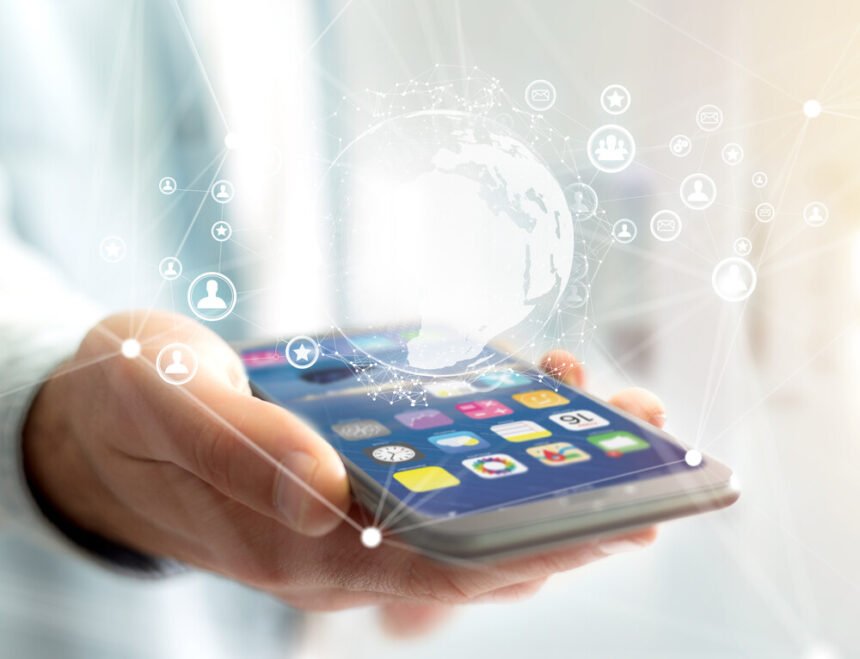Big data is changing almost every device in our lives. Our smartphones are probably the best example. In 2017, Google, Apple and other smartphone companies are finding newer and more creative ways to use big data to create smartphones that will change our lives.
Big Data Creates New Features – And Headaches – for Smartphone Users
Big data has made a number of great new features possible for smartphones. However, it has also created a number of headaches. Grappling with security risks, shortening battery life spans and driving up customer data costs are all among the problems they face.
Smartphone manufacturers have acknowledged some of these problems. Apple recently stated that they are coming up new solutions to protect consumer privacy, due to risks introduced by big data.
What Other Features Should Smartphone Owners Expect in the Future?
The 2007 iPhone marks the beginning of the modern smartphone era as we know it. But it was not born in a vacuum. Steve Jobs said on stage that the iPhone would be standing on the shoulders of giants. It is crucial to know a little about those giants for the iPhone’s contribution to be put into context.
There was Microsoft, Nokia, Palm, and Research in Motion (RIM). Today, those companies either no longer exist as in Palm, or exist only in name after being bought out as in Nokia, or lend their name to products they no longer make as in Blackberry, or have just faded into quiet obscurity as in Windows Phone.
One by one, Apple slew all the giants on whose shoulders it stood while a new set of giants arose. Rather than attacking Apple individually, they formed an alliance: the Open Handset Alliance to be exact, led by Google under the banner of Android, and took on Apple as an industry. It literally became Apple vs. the smartphone world.
While there are thousands of players, there are only a handful that matter. The hardware companies defining the state of the smartphone market in 2017 and beyond are Apple, Samsung, HTC, Google, and a few Chinese Manufacturers. Here is a snapshot of where we are right now:
Lots of Glass
Before the iPhone, screens were on one of the components The main interface was a large keyboard that took up most of the device. The dominant material was plastic for both the body and the display. Today, glass is what dominates the modern smartphone.
It is all about the display. Even the keyboard is an element of the display. Since the iPhone 4, manufacturers have even been putting glass on the back of the phone. The iPhone X: the next big thing in the upcoming lineup is rumored to have an all glass back.
The iPhone ushered in the era of glass, as well as the era of the iPhone X screen protectors. For better or worse, we cannot buy a modern smartphone from any manufacturer without the expediency of a screen protector. Because no matter how well they make it, glass breaks. And it will continue to do so.
The latest crop of smartphones are even more dependent on high-resolution glass. Bezels are out. The race is on to reduce the smartphone to a single pice of glass that can also serve as the screen for AR/VR experiences. Expect this trend to carry for many years into the future.
Digital Assistants
Another reality of the modern smartphone is that they all require a personal assistant to help you perform basic tasks. Everyone gets to be an executive with a call button to a secretary that can do everything from take a note, to call a taxi. No smartphone can be introduced without a digital assistant ready to spring into action with a verbal command.
This expectation was stoked by the inclusion of Siri in the iPhone 4s. Google’s Digital Assistant and Microsoft’s Cortana quickly followed. Companies Like Samsung even provide their own digital assistant apart from what comes with Android. Even Amazon is in the digital assistant game. And they do not even offer a smartphone. The one who wins the digital assistant race rules the world. At least, so goes the thinking right now.
There’s an App for That
A platform with an app deficit is a failed platform. We expect there to be an app for everything we once relied on professionals to do. This includes money management. We have become an app-first society. When we have a need, we do not reach for a phone directory, or even an internet search engine. We reach for a smartphone to find the app for that need.
The aforementioned giants might not have fallen to Apple and Google so easily had they been able to make the adjustment to the new app paradigm. We will always depend on apps. But there will come a time when we access them via digital assistants rather than directly.
The modern smartphone is an app launcher powered by digital assistants made of glass. Within the next five years, expect the smartphone to become the primary computing device for most computer users.

